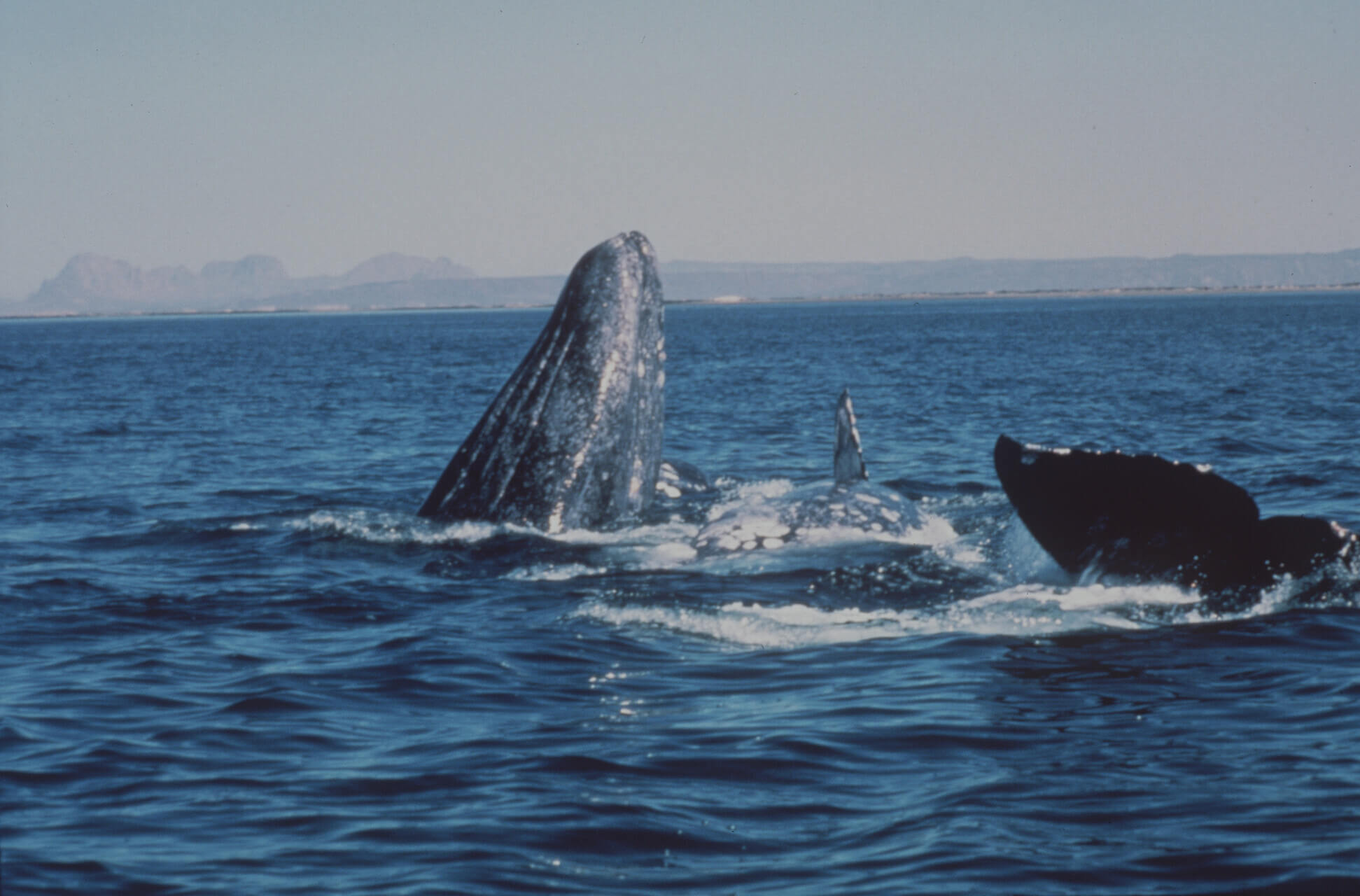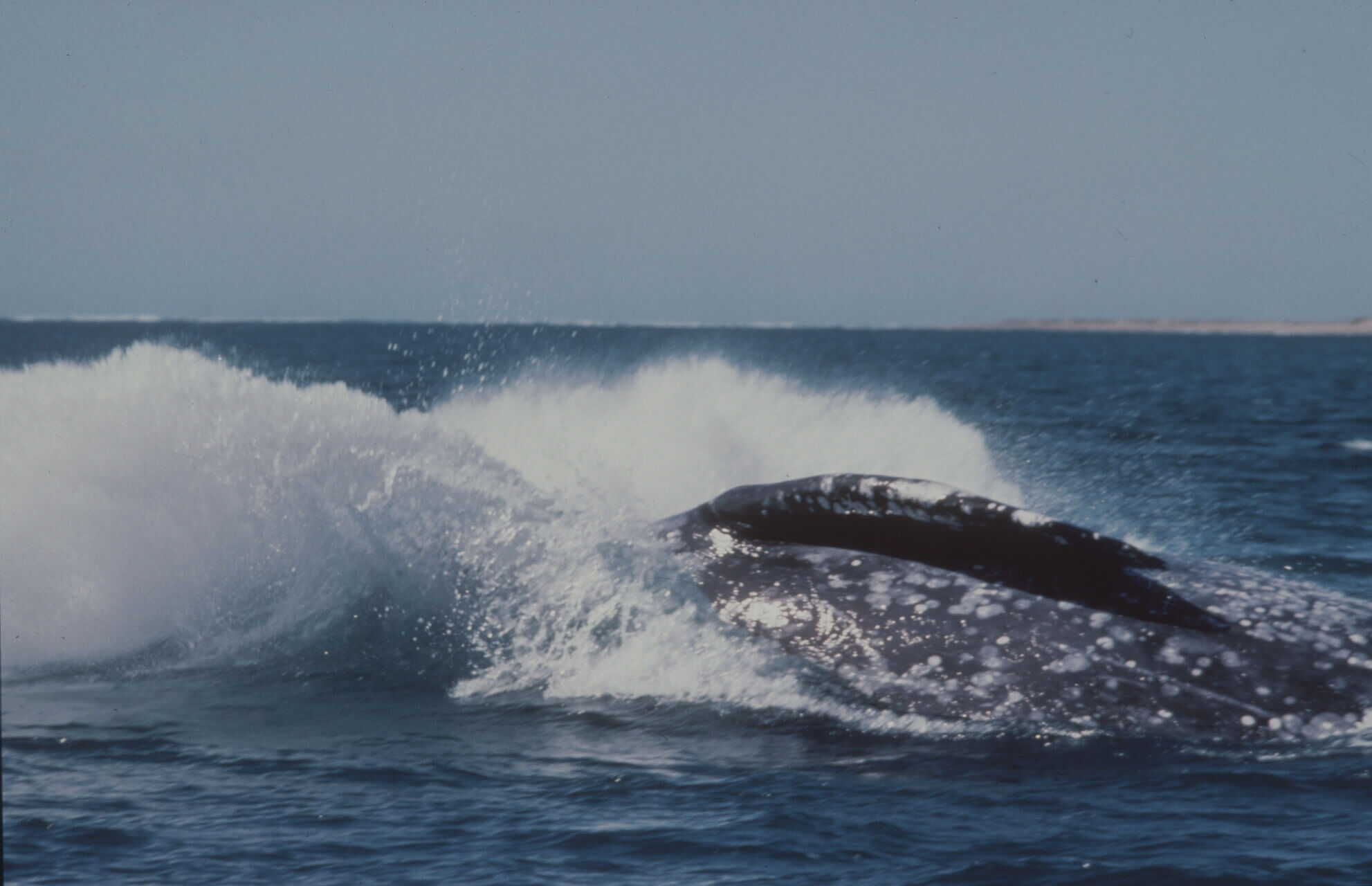Each in their own way, every species on our planet must cope with the impacts of human actions, paving way for a wide range of conservation stories. Some of these stories end tragically. Others, however, make us want to give ourselves a well-deserved pat on the back.
The story of the grey whale falls into the second category. A tale written over the past millennium and punctuated with multiple adventures, sadness and concern, but also fortuitous twists and turns and hope. A story that demonstrates that nature’s resilience, combined with wise human decisions, can lead to miracles.
A tale that begins in the Atlantic
Centuries ago, the fish-laden waters of the Atlantic were inhabited by grey whales. At the time, it must not have been uncommon to observe their bumpy grey backs from the rocky coasts of New England or the sandy shores of the North Sea, the Baltic Sea, or even Iceland.
Although it is uncertain what kind of relationship these whales might have had with humans in those distant times, it is clear that things must have changed drastically over the last thousand years. Because even if the Atlantic population of grey whales initially seemed to be in good health, toward the end it was no longer possible to observe them anywhere.
A disappearance attributable to whaling that likely took place in two stages. First, it was the European fleets that, starting in the 15th century, began decimating the grey whale population in the eastern Atlantic. This tragedy would then repeat itself on the west side of the Atlantic due to the combined work of the European and American whaling fleets. Thus, by the 17th or 18th century, the grey whale is believed to have been completely extirpated from our ocean.
History repeats itself in the Pacific
Even if the Atlantic population had already disappeared by the dawn of the 19th century, the species was still far from extinct, as the two other populations living respectively in the western and eastern Pacific remained in good health. But the situation changed quickly once whalers discovered these coastal populations.
In the eastern Pacific, it is written that it was the discovery of the species’ calving sites in Baja California in the middle of the 19th century that sparked the dramatic decline of this population. The collapse was probably so rapid that between 1855 and 1875, grey whale hunting is believed to have gone from annual harvests of over 400 individuals to being almost impractical. Despite this alarming decline, this population continued to be hunted in other places until the late 19th and even into the 20th century. As a result of this relentless effort, the population plummeted from several tens of thousands of individuals to fewer than 2,000.
On the other side of the Pacific, the scenario was even more dramatic. Hunting with harpoons and nets had long been practised in these waters by the Japanese, but the introduction of modern and more intensive hunting techniques by the Americans and Europeans toward the end of the 1840s upset the existing balance. As with the East Pacific population, it is believed that when the sector was abandoned by Western fleets in the early 20th century, grey whale stocks had already been largely depleted. Despite the rarity of grey whales in these parts, harvests continued for some time over the course of the century until, by the 1970s, the population was finally considered extirpated.
A story that just might end in the Atlantic
By the 20th century, the situation for grey whales was therefore critical if not nearly hopeless. Of the three original populations, two were extinct and the third one was on the verge of suffering the same fate. In short, no one would have placed any wagers on the grey whale. In this context, how is it that today it is so easy to observe these whales during a boat tour off the west coast of North America?
This resounding success can probably be attributed to the signing of a key document, the International Convention for the Regulation of Whaling, which drastically reversed the destiny of these great whales. Indeed, harvesting these animals was outlawed beginning in 1947. And, despite the fact that some countries continued to do so illegally for several more years, the positive impact of this new regulation was almost immediate for the population of the eastern Pacific. After the ban on whaling, grey whale numbers rose quite rapidly to reach the current total of around 27,000 individuals.
The East Pacific population is not the only one to have made a spectacular recovery. A few individuals from the West Pacific population were rediscovered after the latter was believed to have been wiped out. And, even if the plight of the approximately 300 individuals tallied still remains precarious, this population is experiencing a growth rate of approximately 4% per year. It is therefore very likely that, if this pattern continues, the population of grey whales in the west will follow the same trend as their cousins in the eastern Pacific.
And, against all expectations, the flurry of good news could end up reaching the Atlantic. Indeed, since the early 2010s, grey whales have been observed on a few occasions along the coasts of Europe and Africa. Initially considered exceptional, it is now increasingly plausible that these observations indicate that the species will gradually return to the Atlantic through an Arctic Ocean that is slowly shedding its ice.
It therefore seems entirely possible that the combination of well-informed human actions and the resilience of nature will allow future generations to observe grey whales once again from the Korean Peninsula to the Gulf of St. Lawrence, just like our ancestors did.







